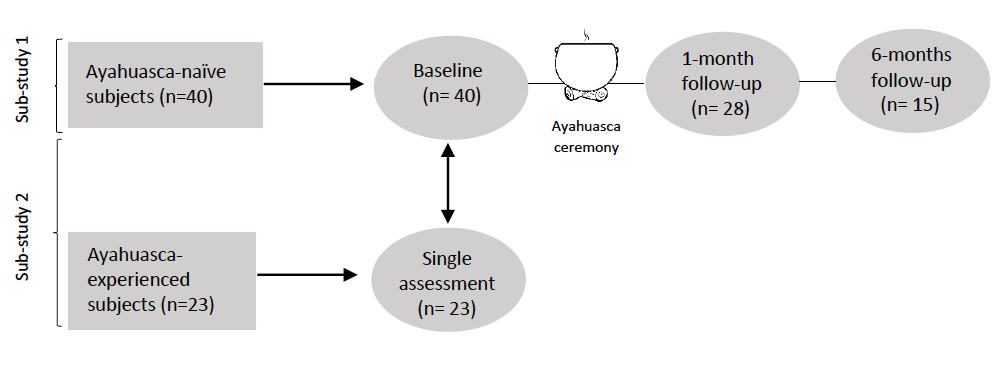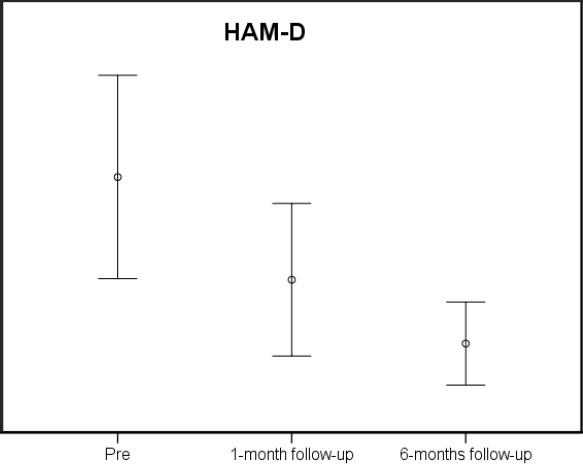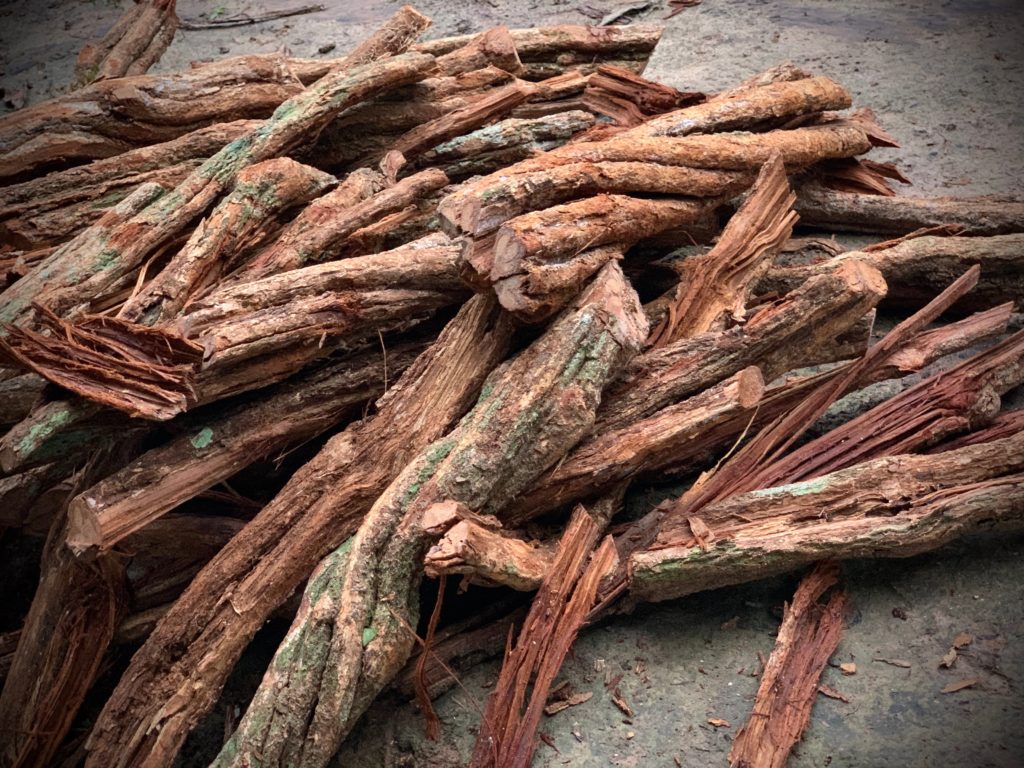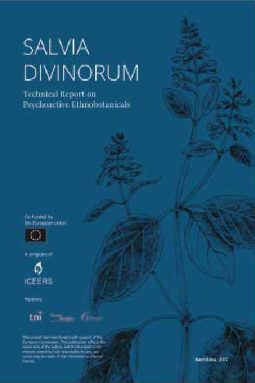Genís Oña, José Carlos Bouso | March 2020
A new study just published by ICEERS provides new insights into the effects of a first-time ayahuasca experience on mental health and quality of life.
The traditional use of ayahuasca has evolved with traditional use in various Amazon communities, who developed diverse recipes and rituals. Use of ayahuasca was introduced to urban areas in Brazil by the syncretic religions of the Santo Daime and the União do Vegetal, among others, who use ayahuasca as their sacrament. From these origins, the ceremonial use of ayahuasca has spread to the rest of the world.
For health professionals, this globalization has also brought concerns around the health impacts for people who participate in ayahuasca sessions for the first time. Until now, there was little published information on the impact of ayahuasca on naïve users. ICEERS’ most recent study, published in the prestigious journal Scientific Reports, by the Nature Publishing Group, provides important findings that can inform future research and policy development.
Effects of first ayahuasca experience on health
As practices with ayahuasca become more widespread, these practices are gaining more interest from researchers and health professionals interested in generating a greater understanding its effects on health. Observational studies carried out with regular participants of ayahuasca ceremonies found some anxiolytic effects and an absence of psychopathology or neuropsychological impairment in research subjects. In addition, other studies that did not include a control group have found antidepressant effects in patients with treatment-resistant major depression. These studies laid the groundwork for a subsequent study, a recently published controlled clinical trial, in which antidepressant effects were also found after a single administration of ayahuasca.
These studies recruited regular participants of ayahuasca ceremonies and people with an established psychopathology. This left a notable gap in the research of ayahuasca’s effects on health: what effects it has on “healthy” people, that is, on the general population.
As for the studies with clinical populations, it is obvious why their results cannot be extrapolated to the general population. The effects we find in people with psychological disorders are very different from those we find in people without any disorders. In the case of observational studies that recruited regular ayahuasca ceremony participants, evaluations are largely limited, since it is possible that only those who are “resistant” to potential adverse effects from ayahuasca will continue to take it. It may also be that others who have taken ayahuasca who experience adverse effects have discontinued their participation in ceremonies. This is what in academic contexts is called “self-selected samples”, i.e. not representative of the general population.
Conducting a study with people who have no previous experience with ayahuasca allows us to overcome this limitation and to clearly see what happens after engaging in this practice for the first time. For this reason, additional studies on with ayahuasca naïve people, such as the one reported on here, are very needed.
Our study procedure
Due established networks that we have developed through other studies, our team, led by Dr. José Carlos Bouso, has contact with dozens of groups that regularly organize ayahuasca ceremonies. For the present study, we contacted these groups, offering them the opportunity to collaborate. The participating groups got in touch with us when individuals without previous experience with ayahuasca approached them who were interested in attending a ceremony. We were then able to recruit people without experience and evaluate the impact of their experience.
Variables that we examined included a psychiatric interview, scales of depression, psychopathology, psychological flexibility, personality, general health and quality of life. A total of 40 people was recruited, who were given these tests before their first experience and at two follow-up time points following the ceremony (after 1 and 6 months).
This study was further divided into two sub-studies: in addition to the longitudinal follow-up of individuals with no previous experience with ayahuasca (sub-study 1), 23 regular ceremony participants were also recruited, who had extensive experience, and were evaluated with the same variables, comparing the results obtained with those obtained in the first evaluation (carried out prior to their first ceremony) of the ayahuasca-naïve (sub-study 2). A schematic diagram of the study is below.

Sub-study 2 was conducted to determine if the possible differences before/after the ceremony in naïve users found can be attributed to regular attendance at ayahuasca ceremonies or, on the contrary, respond to certain previous personal characteristics that may contribute to regular participation in ayahuasca ceremonies.
First ayahuasca experience: key results
Before attending the first ceremony, about half of the subjects (18; 45%) met the diagnostic criteria for a psychological disorder, usually anxiety. This may account for the individual’s interest in the ritual use of ayahuasca, for example they may be motivated by their experience of restlessness or emotional distress. After the first ceremony, at the 1-month follow-up, over half of the subjects (11; 61%) no longer met diagnostic criteria for psychological disorders. Additionally, 22% of the initial 18 still showed some criteria, however it was lesser than in the first survey, prior to the experience. Therefore, 83% of the participants showed an improvement in psychiatric symptoms after the first ceremony.
At the 6-month follow-up, only eight subjects out of the initial 18 who had shown criteria for the diagnosis of some disorder could be evaluated. Of these, only 2 still met diagnostic criteria for one or more disorders. With regard to the data obtained with the different scales, the most relevant results are a significant and continuous reduction in the levels of depression, assessed by the HAM-D scale, and a notable, although less significant, improvement in anxiety levels and improved quality of life.

Regarding sub-study 2, only 2 subjects met criteria for the diagnosis of a disorder. The average number of ceremonies attended during their lives was 70. The most significant findings when comparing to inexperienced subjects with experienced subjects was that experienced subjects showed lower scores of depression a the beginning of the study and also showed higher scores in quality of life.
General conclusions
Due to the expansion of ayahuasca ceremonies, it is important to know its effects on general health. In our study, we did not observe any negative effects on individuals in the short to medium term. Rather what we found was quite the contrary: a drastic reduction in psychiatric symptoms and a general improvement in health and quality of life variables after a first ceremony.
Future studies are needed to evaluate the specific effects by which ayahuasca produces beneficial effects; the duration in time of these benefits; and the reasons why people continue to attend or choose to discontinue their participation in ceremonies.
Categories:
NEWS
, Ayahuasca
, RESEARCH & INNOVATION
Tags:
ayahuasca
, health
, psychoactive plants
, quality of life
, depression


